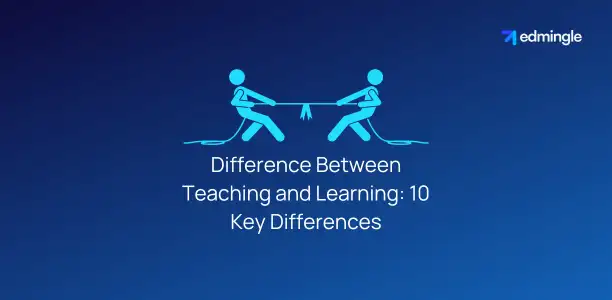
The terms ‘teaching’ and ‘learning’ are often used interchangeably. Yet they mean distinctly different concepts.
And understanding this difference between teaching and learning is crucial. For educators, students & anyone involved in the educational process.
In this blog, we’ll be shedding light. On how these two fundamental factors of education intertwine. And yet stand apart.
Understanding these differences enhances the effectiveness of educational processes and outcomes.
What is the Basic Difference Between Teaching and Learning?
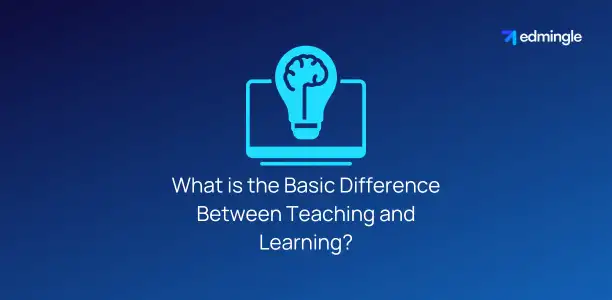
The basic difference lies in their roles and processes. In the entire educational journey.
While teaching is the act of imparting academic knowledge, skills, and values to others.
Real learning, on the other hand, is the process of acquiring knowledge, skills, and values.
In short, the former is the facilitation of knowledge transfer. Whereas the latter is the acquisition & internalization of that knowledge.
Also Read: Difference Between Learning and Training.
What is Teaching?
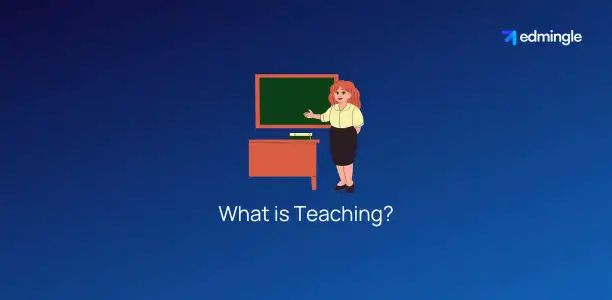
It is an active process. Where an instructor, teacher or educator delivers information. And guides students through the course material.
Teaching involves:
- planning lessons,
- delivering lectures,
- creating educational content,
- assessing student progress, and
- adapting methods to suit the learners’ needs.
The focus is on the presence of teachers, their actions and methodologies. Focused at effectively conveying information.
Related Article: Difference Between Teaching and Training.
Characteristics of Teaching
| Directive Nature: It is inherently directive. it involves guiding, instructing, and imparting knowledge. All from a position of authority or subject matter expertise. | Adaptive Strategy: An effective teaching process adapts to different learning styles, backgrounds & abilities of students. |
| Structured Approach: It typically follows a structured approach. With clearly defined objectives, lesson plans, and outcomes. | Evaluation Focus: A key characteristic is the assessment of student performance and understanding. This is often done through tests and assignments. |
| Active Dissemination: Teachers actively disseminate expert knowledge. By using various methods and tools to facilitate understanding. | Continuous Improvement: Teachers engage in ongoing professional development. In order to refine their skills and stay abreast of educational trends. |
Forms of Teaching
- Traditional Lecturing: Involves direct instruction from teacher to student. Commonly seen in classroom settings.
- Experiential: Centers on hands-on learning experiences. Like labs or field trips, where interaction is more.
- Socratic Method: Based on asking and answering questions to stimulate critical thinking and illuminate ideas.
- Peer Teaching: Students teach each other. Hence, enhancing understanding through peer interaction.
- Online Instruction: Utilizes digital platforms to allow for asynchronous and synchronous learning.
What is Learning?
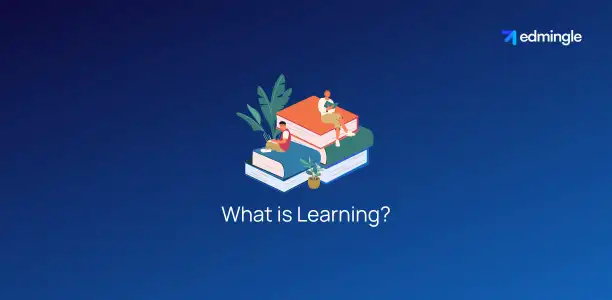
It is a more passive process from the perspective of the teacher. But an active one for the learner.
Learning happens when students absorb, process & understand the information provided by the teacher. It can be self-directed & experiential.
It can also occur through various methods like reading, practicing, or observing. The focus here, is on the student’s experience and the internalization of new information.
Also Read: Difference Between Education and Training.
Characteristics of Learning
| Active Engagement: It requires active engagement and participation from the learner. Read more about active vs passive learning. | Goal-Oriented: It is often goal-driven. Whether for personal development, professional advancement or academic achievement. |
| Personalized Experience: It is a highly individualized process. Influenced by the learner’s background, experiences, and preferences. | Continuous and Lifelong: It is a continuous, lifelong process. It evolves with life experiences and changing needs. |
| Constructive Process: Learners construct knowledge by connecting new information with existing knowledge levels. | Self-Motivated: An effective knowledge acquisition process is often driven by self-motivation and curiosity. However, by using key techniques, you can motivate students to learn more. |
Types of Learning
- Visual Learning: Occurs through seeing. Such as through diagrams, charts, and videos.
- Auditory Learning: Takes place by listening to lectures, discussions, and audio recordings.
- Kinesthetic: A hands-on approach. Where it occurs through doing and moving.
- Social: Involves interaction with others. Social Learning takes place in group settings or communities.
- Solitary Learning: Self-study or independent study. Often happens through self-paced online courses or reading.
In short. Both, while interconnected, have distinct characteristics and forms.
Relationship Between Learning and Teaching
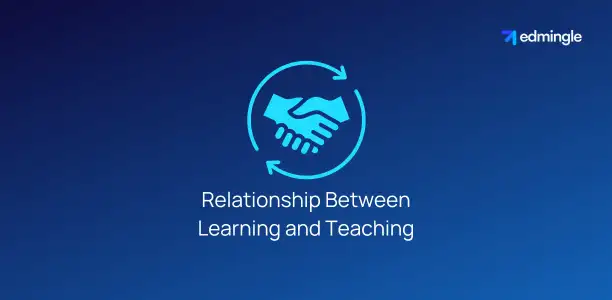
While they are distinct & vital processes. Their relationship is deeply intertwined and reciprocal.
However, their effectiveness often depends. Majorly, on how well they interact and complement each other.
The table below shows a closer look at their relationship.
| Facilitation and Reception: At its core, the former is about facilitating knowledge, skills, and values. While the latter is about receiving and internalizing them. Effective teaching, therefore, directly influences the quality & depth of learning. | Feedback Loop: There is a constant feedback loop between both. The responses and progress of learners inform teachers about the effectiveness of their methods. Thus, allowing them to adjust their strategies to enhance learning outcomes. |
| Adaptation and Personalization: Teachers must adapt their methods. To cater to the varied styles and needs of their students. This adaptation improves the learner experience. By making it more personalized and effective. | Motivation and Engagement: Good teaching methods can significantly boost learner motivation and engagement. Engaged and motivated learners absorb and retain more information. This leads to successful outcomes. |
| Collaborative Growth: They are not just one-way processes. They are collaborative. Students often bring unique perspectives and knowledge that can enrich the teaching process. Just as teachers facilitate the expansion of students’ knowledge base. | Environment Creation: Teachers play a crucial role in creating an environment conducive to learn. This environment can be physical or virtual. The quality of this environment greatly impacts the learning process. |
| Role Transition: In modern educational paradigms, the roles of teacher and learner can often overlap. Students may take on teaching roles in peer-to-peer scenarios. And teachers can learn from their experiences and student feedback. | Shared Goal: Ultimately, both share the same goal. The expansion of knowledge and skills. They are part of a continuous cycle of education. Where each influences and enhances the other. |
Thus, we see that the relationship between teaching and learning is symbiotic. Each relies on the other to achieve the overarching goal of education.
Which is to build the foundations of growth, understanding, and the application of knowledge.
Also Read: Difference Between Course and Training.
Key Difference Between Learning and Teaching (Teaching vs Learning)
For a better understanding, the table below highlights the key distinction between the two.
| Aspect | Teaching | Learning |
|---|---|---|
| Definition | Teaching is the act of imparting knowledge and skills to others. | Learning is the process of acquiring knowledge and skills. |
| Focus | Focuses on the teacher’s methods and delivery of content. | Centers on the learner’s understanding and internalization of information. |
| Role | Involves the role of an instructor or facilitator. | Involves the recipient role of a student or receiver of information. |
| Activity | Active process of presenting and explaining material. | Active process of receiving, processing, and understanding information. |
| Approach | Structured and planned. With defined objectives and outcomes. | Often self-directed, exploratory, and personalized. |
| Control | An effective teacher controls the flow and structure of information. | Learner controls the pace and depth. |
| Feedback | Teacher evaluates learners’ performance and understanding. | Learners provide feedback on a teacher’s effectiveness. |
| Adaptability | Adapts interactive teaching strategies to meet learners’ needs. | Adapts strategies to personal preferences and abilities. |
| Outcome | Measured by the effectiveness of content delivery and student understanding. | Measured by the acquisition of knowledge, skills, and personal development. |
| Tools | Utilizes educational tools like lesson plans, presentations, and assessments. | Utilizes tools like notes, research materials, and educational software. |
This table summarizes the fundamental differences between teaching and learning.
Summary of Teaching vs Learning
As we wrap up our exploration. It becomes evident that these two facets of education. While distinct, are fundamentally interconnected.
Teaching, with its directive nature, shapes the educational landscape. Simultaneously, the latter stands as the cornerstone of educational progression & personal development.
The synergy between them illustrates their symbiotic nature. Where each element enriches the other.
Understanding this difference between teaching and learning becomes not just an academic exercise. But a vital tool in enhancing the efficacy and joy found in the educational experience.
FAQs on Difference Between Teaching and Learning
1.Can learning occur without teaching?
Yes, it can happen through self-study, exploration & experiences. And even with behavior & interactions with the environment. While teaching can facilitate learning, it is not the only way it can occur.
2.How does the effectiveness of teaching impact learning?
The effectiveness of teaching greatly impacts the quality and extent of learning. Good delivery methods can enhance understanding, retention, and application of knowledge. While an ineffective method can hinder the process.
3.Is teaching always delivered by a professional teacher?
No, it’s not exclusively the domain of professional teachers. It can be done by anyone who imparts knowledge or skills. Like a coach, mentor, parent, or peer.
4.In what ways do teaching and learning influence each other?
Both are interdependent. Effective teaching responds to the languages, styles and needs of students. And successful learning can inspire more innovative and responsive methods to teach. Feedback from learners helps teachers improve their strategies.
5.Does technology affect the relationship between teaching and learning?
Yes, technology significantly impacts both. It provides new tools and methods for teachers. Such as digital resources and interactive platforms. While offering learners diverse and flexible ways. To engage with content and develop understanding.
6.Are teaching and learning processes static or dynamic?
Both are dynamic processes. They evolve based on educational research, technological advancements, and cultural shifts. What constitutes effective can vary over time and context.
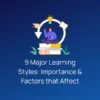
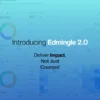

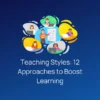


Leave a Reply